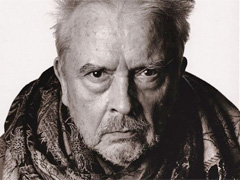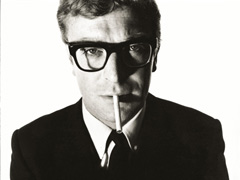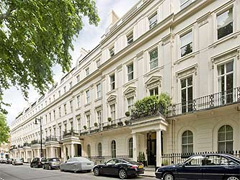


As a young boy, David Bailey never thought he would become a photographer. He tried his hand at selling carpets and shoes before joining the RAF. Then at the age of 19 he took an interest in the work of Henri Cartier Bresson, the man credited with inventing modern photojournalism, and purchased his first camera. Within a few years he was freelancing for British Vogue, photographing stars like Twiggy, Jean Shrimpton, Michael Caine and Mia Farrow. But how did he get there?
Bailey grew up in East Ham; his father was a tailor and his mother was a machinist. His father walked out when he was a child, leaving his mother and aunt to raise him. During the first few years of his life he witnessed the destruction of the Second World War; in interviews he’s recalled walking over piles of smashed glass and rubble, and seeing the devastating effects of bomb damage on his street.
Suffering from dyslexia that went undiagnosed, he left school at 15 with no qualifications, and after a series of dead end jobs he joined the air force. After spending almost a year in Singapore he decided photography would be his vocation, however his lack of schooling meant he couldn’t get into college. Fortunately he found work as a studio assistant in the West End.
Bailey wasn’t particularly interested in fashion, however he quickly realised that if he wanted to make a living out of creative photography he’d have to start attending fashion shows. After a couple of jobs in photographic studios he got work at British Vogue in 1960, and a long and fruitful partnership began (to date he’s shot 18 covers for the magazine). Thanks to Vogue he was able to document, as well as help shape Swinging London, the cultural, largely hedonistic movement of the 1960s when fashion and the arts flourished.
\n\nHe launched the career of Jean Shrimpton, the world’s first supermodel, with whom he also had a relationship. She popularised the mini skirt and doe-eyed make up, both looks that epitomised the 60s; so momentous was her alliance with Bailey that in 2012 the BBC produced a drama called ‘We’ll Take Manhattan’ about their personal and professional relationship.
In 1966 Italian film director Michelangelo Antonioni made ‘Blow Up’, a film revolving around an in-demand fashion photographer based on Bailey played by David Hemmings. In one unforgettable scene he straddles model Veruschka, and has a seemingly endless parade of wannabe models throwing themselves at him.
Being a top fashion photographer made it easy for Bailey to slip into the role of lothario, and he had love affairs with many of the women he photographed. He married his first wife at the age of 22, but within months he moved on to Shrimpton; during his second marriage to French actress Catherine Deneuve he fell for model Penelope Tree. In 1975 he married model Marie Helvin, a union that lasted ten years, although he was hardly the loyal spouse, and meanwhile his playboy ways managed to incur the wrath of feminists during the decade of women’s liberation. In 1986 he wed his fourth wife, another model called Catherine Dyer, with whom he has three children, and they remain together to this day.
But what set his images apart from those of his contemporaries? Bailey says he always spends an hour talking to his subjects before photographing them. This pays off as in the resulting photos his models have character and warmth, where fashion photographers before him have often simply depicted clothes horses.
\n\nBut while he made his name with fashion, he didn’t just photograph beautiful women. The Beatles, the Rolling Stones, Jack Nicholson, Andy Warhol, Michael Caine, and the notorious Kray twins all got in front of the lens for him, and Bailey became just as famous as the celebrities he snapped. More recently he’s worked with Damon Albarn, Patti Smith, Lucy Liu and Prince Harry.
There have been plenty of times when he’s also chosen more serious subject matter. His 1976 book ‘Mixed Moments’ is divided between glossy fashion shoots featuring his then wife Helvin, and the scenes of poverty he encountered during his travels to India. In 2010 GQ sent him to photograph the British troops in Afghanistan, something which he stated he’d hoped would dissuade his two sons from ever wanting to join the army. Two years later he held an exhibition titled ‘David Bailey’s East End’, a collection of pictures taken from the 60s onwards where he paid homage to where he grew up.
In 2001 Bailey was awarded a CBE for services to photography. Although his career has been phenomenal, he hasn’t always been received with open arms. Back in the 60s, he faced criticism from society photographers like Lord Snowdon and Norman Parkinson, who disapproved of his subject matter (in particular the Kray twins) and didn’t like his down to earth, rock ‘n’ roll style. He’s also garnered a reputation for being prickly to work with. He cancelled a shoot with Lady Gaga after hearing reports of her tendency to storm out and “be silly”. Yet rock stars, actors, politicians, models and royals queue up to work with him.
Nowadays he sticks to doing just one fashion shoot per year, usually for i-D or Vogue. However after turning British fashion photography on its head in the 1960s, David Bailey’s name will forever be synonymous with Swinging London.


